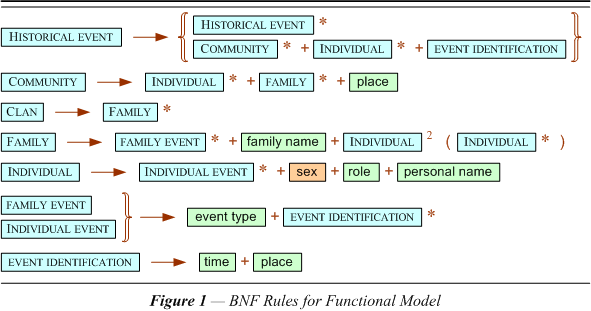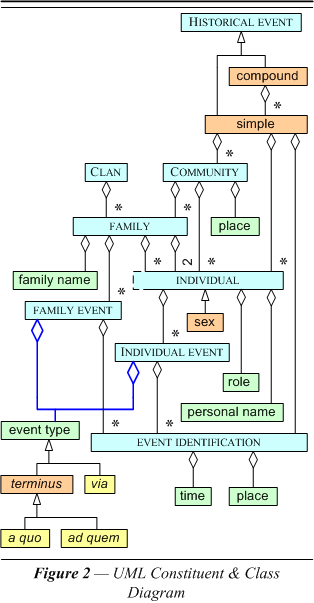
BNF Model of vital events. At the beginning of this chapter we introduced the nuclear family as a social institution consisting of individuals. We listed on figure 2 three identifiers for each of these entities being certain events that serve to identify them. We now give a little more context to these genealogical objects and denote these important events “vital events.”

Figure 1 makes the events of history the primitive terms of the semantic field of interest. An event like a war may be seen to consist of one or more battles. This is the primary motivation for classifying the historical event as either simple or compound. The event involves one or more communities and one or more individuals. The community is defined as a group of families and individuals resident in one place. In turn the (nuclear) family is composed of individuals in the relationships set out in the introduction: the two spouses with possible children to rear, each carrying a personal name. Multiple families may be members of a “clan,” and typically carries a family name as an identifier. The sex and the role of the individual in the family can also serve as features for identification purposes. Also important as identifiers are the events that mark the beginning and ending of the family’s and/or the individual’s existence.
UML Model of vital events. Figure 2 shows the same classes as in figure 1 with the addition of the subclassification of the event type. The birth and marriage are termini a quo for the individual and nuclear family respectively. The death and disolution are termini ad quem for these events. These features give us the ablility to refer to events without recourse to their lexical reflexes.

Notice that we have used colors for the boxes as if these classes referred to linguistic entities. The light green elements are no longer functional, but syntactic in nature. The grammar, however, is not a grammar of a natural language, but a “grammar of genealogy.” The structures being described are not linguistic, but genealogical.
